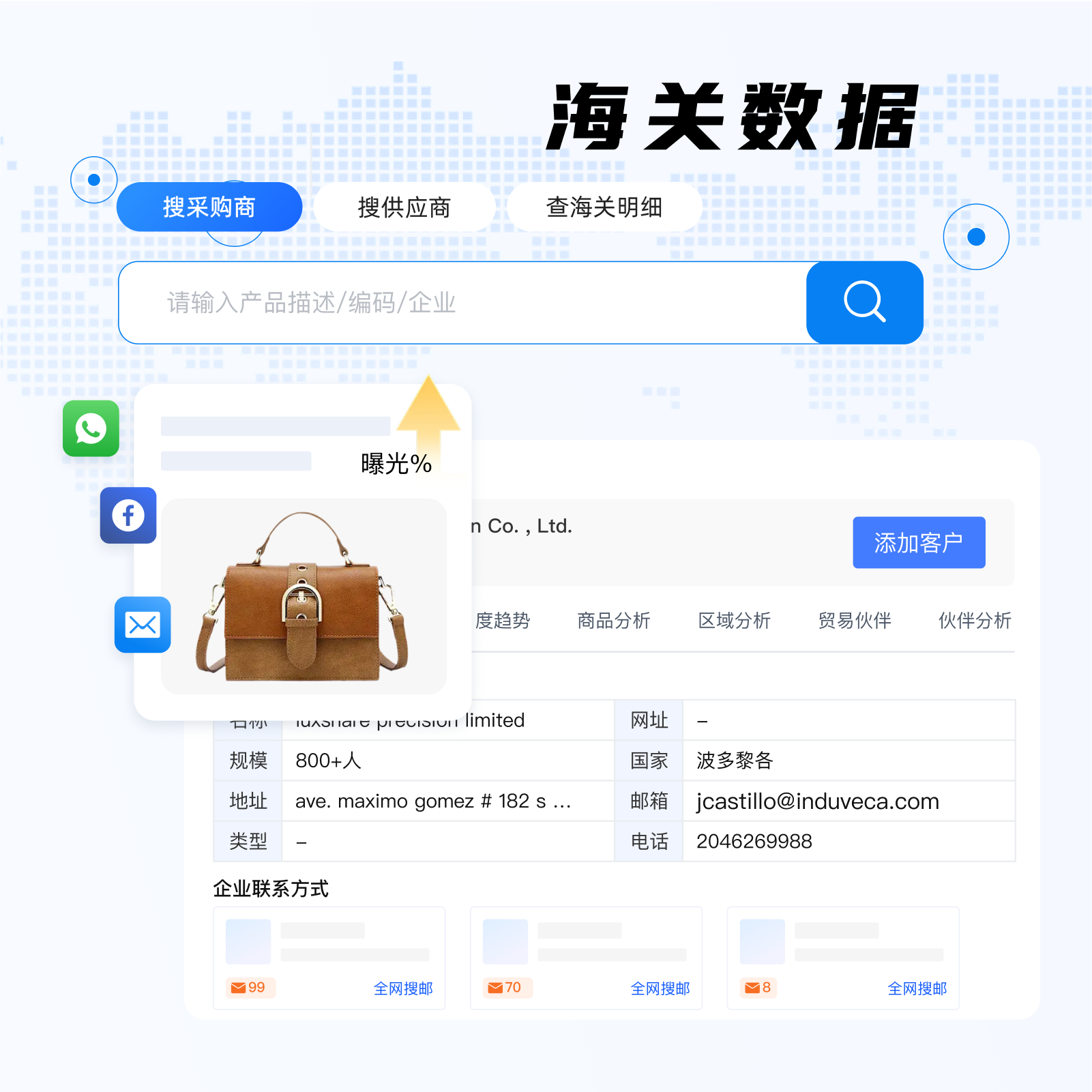 400-076-6558智领未来,外贸超级营销员
400-076-6558智领未来,外贸超级营销员
 400-076-6558智领未来,外贸超级营销员
400-076-6558智领未来,外贸超级营销员

As a global buyer venturing into overseas markets, leveraging customs data analysis is essential to uncovering reliable suppliers, identifying market opportunities, and staying ahead of competition. This comprehensive guide breaks down three core analytical strategies tailored for procurement professionals seeking data-driven insights without complex jargon. By understanding how to interpret import-export volumes, supplier behavior, and competitor footprints, you can transform raw customs data into actionable intelligence that drives successful sourcing decisions.
Begin by examining total import volumes and category concentration in your target countries. For instance, using the UN Comtrade database reveals the top 10 importers of electronic accessories worldwide — including the United States, Germany, and Japan — each accounting for over 15% of global imports in this category. This data allows buyers to identify markets with robust demand while avoiding oversaturated “red ocean” zones that can inflate costs or delay deliveries.
Key data points to watch:
| Country | Import Volume (Million USD) | Category Concentration (%) |
|---|---|---|
| United States | 3,500 | 18.2 |
| Germany | 2,100 | 15.7 |
| Japan | 1,900 | 14.5 |
By narrowing focus on such high-import markets, buyers mitigate risks and pinpoint areas where demand outpaces supply—a prime condition for negotiation leverage.
The dynamics behind purchasing patterns reveal invaluable insights into supplier reliability and market trends. Analyze procurement frequency and supplier switching behaviors to unearth active buyers eager for new partnerships. For example, a procurement company in South Korea may have purchased semiconductors monthly for the past 3 months but switched suppliers twice during that period. This pattern suggests openness to competitive offers.
Filtering such buyers within customs databases by combining transaction volume with supplier change history helps prioritize leads with high conversion potential. Contact details available in the shipping records can then be used for customized outreach.

Understand your competition by tracking their export destinations, price brackets, and buyer coverage. Utilizing platforms like AB Customs Data allows you to cross-analyze competitor shipments revealing their top markets and pricing trends. For instance, a major competitor exporting apparel to Canada and Mexico consistently targets mid-tier pricing zones between $20-$30 per unit.
Leveraging such insights lets you formulate differentiated pricing or innovative product offerings that meet unmet needs or circumvent saturated niches.

Simplify your customs data journey with this streamlined sequence:
This “universal formula” enables even newcomers to swiftly convert complex customs data into winning purchasing strategies.
.png?x-oss-process=image/resize,h_100,m_lfit/format,webp)
.png?x-oss-process=image/resize,h_100,m_lfit/format,webp)

.png?x-oss-process=image/resize,h_100,m_lfit/format,webp)
.png?x-oss-process=image/resize,h_100,m_lfit/format,webp)
.png?x-oss-process=image/resize,h_100,m_lfit/format,webp)
.png?x-oss-process=image/resize,h_100,m_lfit/format,webp)
